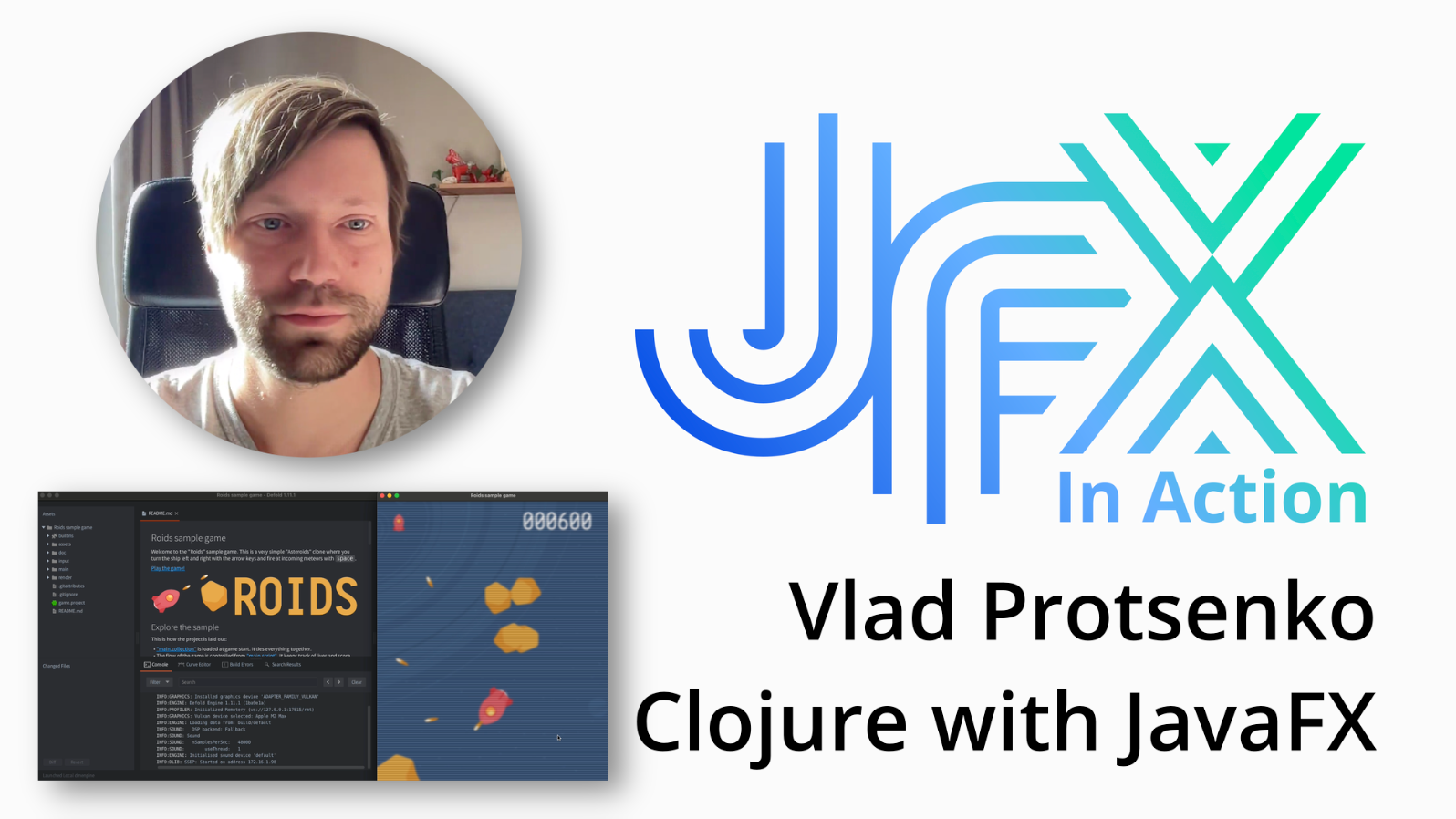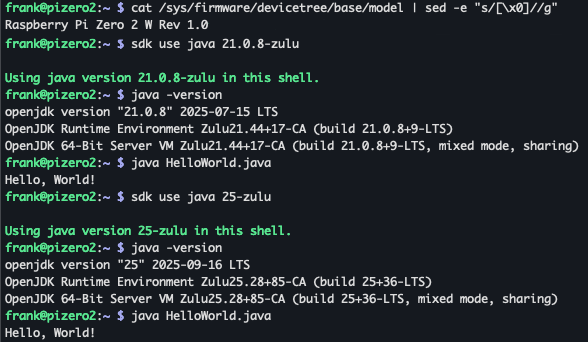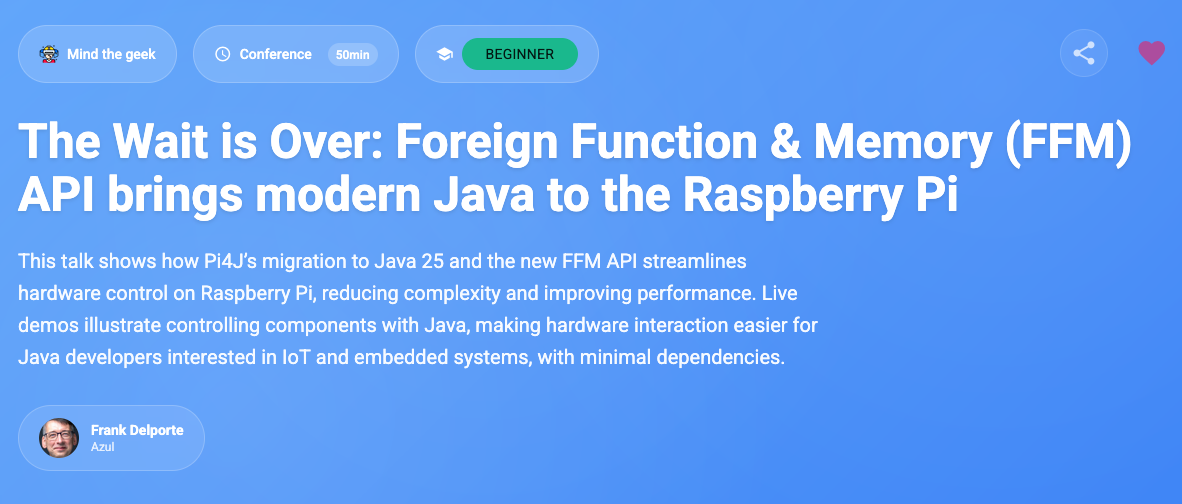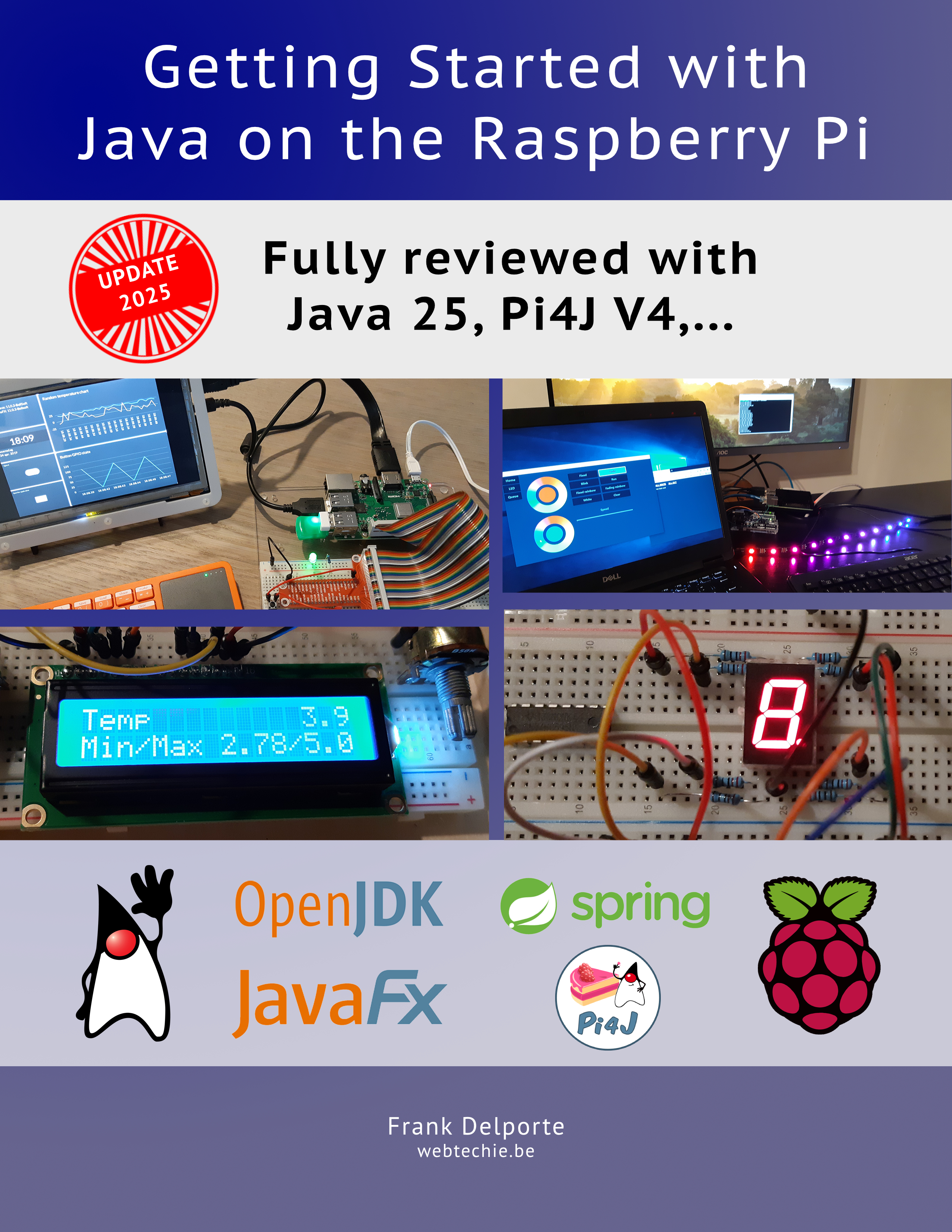Blog of Frank Delporte, Java Champion, Software Developer, Technical Writer, Nerd/Geek
JavaFX In Action #21 with Vlad Protsenko, Combining Clojure with JavaFX for Game Development with Defold
Vlad Protsenko is a Clojure developer working at Defold. While I initially wanted to learn about the Cljfx project, our conversation evolved into a learning experience: a practical getting-started guide to Clojure, a hands-on demonstration of building JavaFX user interfaces with minimal code, and an inside look at the Defold game engine and its JavaFX-based IDE.
Java 21+ on Raspberry Pi Zero 2 is Back In Business
As described before on Java 21+ Not Working on Raspberry Pi Zero 2, a problem appeared to execute Java code on the Raspberry Pi Zero 2 with OpenJDK 21 or higher. Reason: in OpenJDK 21 the Just-In-Time (JIT) compiler has been improved, but this change doesn’t work correctly on the ARM Cortex-A53 processor as used in the Zero 2. It’s another type of processor compared to, for instance, the Raspberry Pi 4 (Cortex-A72) and 5 (Cortex-A76).
Links from the Devoxx talk 'Foreign Function & Memory (FFM) API on Raspberry Pi'
These are the links from the Devoxx talk in Antwerp, Belgium, on October 9, 2025: “The Wait is Over: Foreign Function & Memory (FFM) API brings modern Java to the Raspberry Pi”.
2025 Update of my ebook 'Getting Started with Java on the Raspberry Pi'
2025 is an important year as Java 25 got released, a version which will be supported for many more years. On top of that, the Pi4J library will soon be published as V4.0.0 with a new plugin making use of the FFM API, a new feature added to Java in version 22.
JavaFX Links of September 2025
Here is the overview of the JavaFX LinksOfTheMonth of September 2025. You can find the weekly lists on jfx-central.com. Did we miss anything? Is there anything you want to have included in one of the next overviews? Let us know via links@jfx-central.com.
Live Stream Coding: Improving the Vaadin+Spring+Pi4J demo application with Matti Tahvonen
During a live stream coding session, Matti Tahvonen and I updated an existing Vaadin+Spring+Pi4J demo application to use the latest version of the libraries and Java 25. It’s a demo application I created a few years ago to using during presentations at conferences. Of course, everything evolves, so a big update and refactoring was needed.
JetBrains Plugin for IntelliJ IDEA (and other IDEs): Recent Projects Organized
I created my first IntelliJ IDEA plugin to fix a minor, personal frustration… I have a long list of projects I’m working on and need to switch between them frequently. But it’s hard to locate a specific project in such a long list. But this problem is now solved! I created a small plugin that adds a new option to the “File” menu: “Recent Projects (Organized)”. It shows your recent projects, organized by the first word of their project name. When multiple projects share the same first word, they get grouped in a submenu.
JavaFX Links of August 2025
There is only one “Links Of The Week” for August thanks to a nice summer break. So this is actually a “Links Of The Month”… ;-)
Release V0.0.2 of Java DMX512 Library With Universes and USB-to-DMX support
Earlier this month, I released V0.0.1 of my new Java library to interact with DMX512 devices using (optionally) the Open Fixture Library (OFL). After some more experimenting, I’m able to announce the next (beta) release V0.0.2 with the following major changes:
JavaFX Links of July 2025
Here is the overview of the JavaFX LinksOfTheMonth of July 2025. You can find the weekly lists on jfx-central.com. Did we miss anything? Is there anything you want to have included in one of the next overviews? Let us know via links@jfx-central.com.





